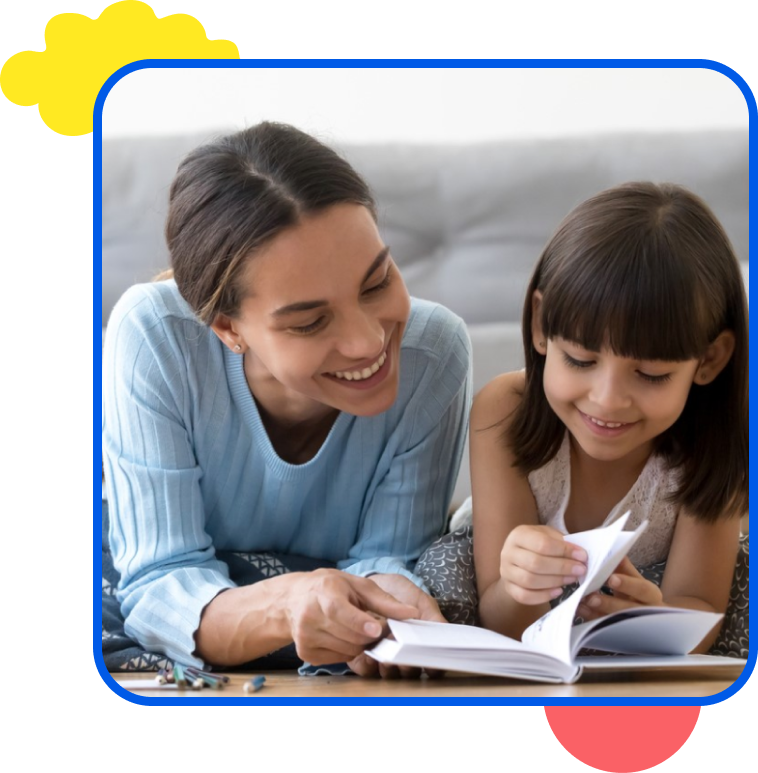Is Korean Hard to Learn for Native English-Speaking Children?



Dreaming of raising a bilingual child fluent in both Korean and English? If so, you may be curious about the challenge of learning Korean and concerned about your child’s ability to grasp the language.
In this blog post, we’ll delve into the question, “Is Korean hard to learn?” and offer valuable insights and guidance for parents considering enrolling their child in Korean classes.
We aim to assist you in making an informed decision and provide the necessary resources to support your child’s bilingual journey. We’ll also show you how your child can start learning Korean for free.
Let’s dive in!
Is Korean hard to learn?
The Korean language, spoken by over 75 million people worldwide, holds immense cultural and economic significance. It is the official language of both North and South Korea, and its influence extends beyond the Korean Peninsula.
Let’s delve into the unique features that make Korean an intriguing but sometimes difficult language for young language learners.
The Korean alphabet (Hangul)
One of the standout aspects of the Korean language is its writing system, known as Hangul. Unlike many other languages that use complex characters or symbols, Hangul is a phonetic alphabet consisting of 14 consonants and ten vowels.
Here are some factors that may pose difficulties for native English-speaking children:
- Different Writing System: Hangul uses a unique phonetic writing system that may be unfamiliar to English-speaking children. Unlike the English alphabet, which consists of letters representing sounds, Hangul combines letters into syllabic blocks representing individual syllables. This shift in concept and structure requires children to adjust their understanding of written language.
- Letter Shapes and Sounds: The shapes of Hangul letters differ from those in the English alphabet, which can initially confuse young learners. Additionally, certain sounds in Korean may not exist in English, making it necessary for children to learn new phonetic distinctions.
Korean pronunciation
Pronunciation challenges in Korean can arise for English-speaking children due to differences in phonetic sounds. Here’s a closer look at the difficulties they may encounter:
- Consonant pronunciation: Korean has several consonant sounds that may not exist in English or have close equivalents. For example, the Korean consonant “ㄹ” represents a sound that is a blend between the English “r” and “l” sounds. English-speaking children may find it challenging to accurately produce this sound, as it requires them to position their tongue differently than English pronunciation.
- Aspiration and tension: Korean has contrasting aspirated and tense consonant sounds that can be challenging for English speakers. Aspirated sounds are produced with a release of a puff of air, while tense sounds involve a tensing of the vocal cords. Mastering these distinctions can be initially difficult for children not accustomed to making such subtle vocal adjustments.
- Vowel sounds: Korean has vowel sounds that differ from those in English. Children may struggle to accurately produce these unfamiliar vowel sounds, which can affect their overall pronunciation. Differentiating between similar-sounding vowel sounds can also be a challenge.
- Intonation and pitch: Korean has a distinctive intonation pattern and pitch accent system. English-speaking children may find it difficult to replicate the rising and falling intonation patterns and apply the appropriate pitch accent to words and phrases.
Korean Grammar structure and word order
Korean grammar structure and word order can be challenging for English-speaking children due to its differences from English. Here’s a closer look at the difficulties they may encounter:
- Subject-Object-Verb (SOV) word order: Korean follows a subject-object-verb word order, which is the opposite of English’s subject-verb-object structure. This change in word order can initially feel unfamiliar and require children to adjust their sentence construction.
- Complex sentence endings: Korean grammar utilizes a variety of sentence endings, including particles, verb endings, and honorific markers. Understanding and correctly using these sentence endings can be challenging for English-speaking children accustomed to a simpler system of sentence formation.
Complex honorifics and speech levels
Korean employs honorifics and different speech levels to show respect and formality. Here’s why that may pose challenges for children learning Korean:
- No English equivalent: English does not have an equivalent system, so understanding and applying honorifics can be difficult for children. Mastering the nuances of honorifics and speech levels requires time and exposure to the Korean language.
- Politeness and formality: Korean has specific language conventions for politeness and formality. Children need to learn how to use the appropriate level of politeness and adjust their speech depending on the social context. This aspect of Korean language etiquette may take time for English-speaking children to grasp and apply correctly.
What makes Korean easy to learn for English speakers
Now that we have discussed the challenges of learning Korean for English speakers, let’s explore the aspects that can make Korean easy to learn for English-speaking children!
- Phonetic nature of Hangul: Hangul is a phonetic writing system designed to represent the sounds of the Korean language. Each letter corresponds to a specific sound, making it easier for English speakers to associate written symbols with their respective pronunciations. This phonetic nature simplifies the process of reading and writing in Korean.
- Logical grammar rules: Korean has a logical and systematic grammar structure. Once learners grasp the basic rules and patterns, they can apply them consistently. Unlike English, which has irregularities and exceptions, Korean grammar follows consistent principles, which can make it easier for English speakers to understand and apply grammatical rules.
- Lack of gender and plural forms: Unlike some languages, Korean does not have gender-specific pronouns or complex plural forms. This aspect simplifies sentence construction for English speakers accustomed to a similar lack of gender and plural distinctions in their native language.
- Limited verb conjugations: Korean verb conjugation is relatively straightforward compared to other languages. While there are conjugation rules to learn, they are not as extensive or complex as in certain languages, such as French or Spanish. English speakers may find Korean verb conjugation patterns more manageable to grasp and apply.
- Abundance of language learning resources: Korean has gained global recognition thanks to the soaring popularity of K-pop music, dramas, and movies! As a result, there are ample resources to gain authentic exposure to native Korean speakers. There are also numerous resources and online Korean language programs for children.
Tips for parents with kids learning Korean
Learning a new language can be an exciting adventure for kids! To make learning Korean enjoyable and effective, here are some strategies and practical tips.
Immersion through Korean media and entertainment
K-pop has become popular worldwide and is a great resource for language learners! Introduce your child to popular Korean songs and music. Listening to music is a fun and engaging way to expose them to the language, improve their pronunciation, and expand their vocabulary.
You can also watch age-appropriate Korean dramas or TV shows with your child. Subtitles can help them associate spoken words with written text, enhancing their listening and comprehension skills.
Interactive language learning apps
Popular language learning apps, such as Duolingo, can make learning Korean enjoyable by incorporating games, quizzes, and rewards to motivate your child’s progress.
Although, it’s important to keep in mind that there are some limitations to these apps. Your child will not be able to learn Korean exclusively from an app.
Still, language learning apps can provide structured curricula, interactive exercises, and engaging multimedia content to keep children interested and motivated.
Speaking practice with native Korean speakers
One of the most effective ways for your child to practice speaking Korean is by engaging in conversations with native Korean speakers. You can connect with Korean-speaking families or language exchange programs in your community or online.
You can also consider signing up for online Korean classes for kids. At LingoCircle, we offer small group classes led by certified, native-speaking Korean language teachers. These classes are a great way for your child to also meet other children learning to speak Korean!
Be consistent with study time.
Consistency is key when learning a new language. Establish a regular study routine for your child and encourage them to stick to it. Younger children may benefit from shorter, more frequent study sessions, while older children may be able to handle longer sessions.
Aim for regular practice, whether daily or weekly. At LingoCircle, we offer weekly 45-minute language classes to provide consistent and measurable progress for our students. This regular engagement with the language, even with just one session per week, ensures steady advancement in language skills.
Final thoughts
Learning Korean can present challenges, but the rewards of bilingualism and cultural exploration can make it an incredibly valuable journey for your child! As a parent considering Korean classes, we hope the strategies and tips we’ve shared will ease the learning process and make it enjoyable for your child.
At LingoCircle, we offer online Korean classes for kids designed to make language learning engaging and interactive. Our certified, native-speaking teachers use innovative teaching methods to keep children motivated and excited about learning Korean.
Consider enrolling your child in one of our virtual classes and witness their Korean language skills flourish. Click here to get the first lesson for free!


Simple Ways to Learn a Second Language at Home
Get resources and tips to help supplement your bilingual education journey at home.
By providing your email you are signing up to receive emails from Bilingual Bebe. Privacy Policy







